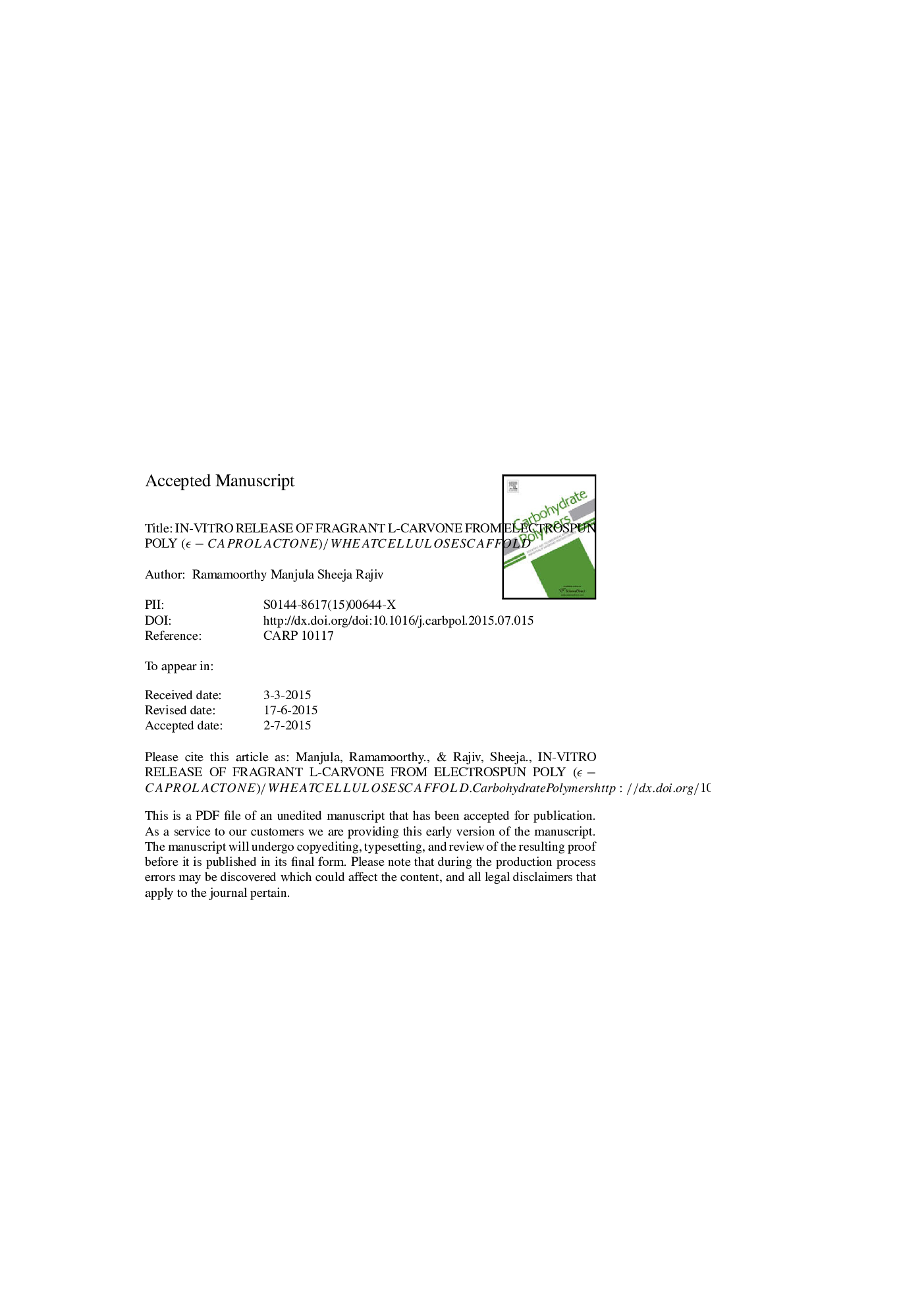| Article ID | Journal | Published Year | Pages | File Type |
|---|---|---|---|---|
| 7787635 | Carbohydrate Polymers | 2015 | 26 Pages |
Abstract
The release kinetics of l-carvone loaded from electrospun poly(ϵ-caprolactone) (PCL) and Wheat cellulose (WC) blend were studied. WC was extracted from wheat straw, a cost effective agricultural waste by the acid hydrolysis method. A homogeneous solution of PCL-WC (13:3 wt%) was optimized to produce beadless electrospun PCL-WC blend nanofibers. Further, WC and the prepared electrospun PCL-WC blend fibers were systematically characterized by ATR-FTIR, SEM, XRD, TGA, DTGA, and DSC measurements. The hydrophilic character of the blend fibers was analysed using swelling tests and contact angle measurements. The loading efficiency of l-carvone into the electrospun PCL-WC blend fibers was evaluated to be â¼70%. The in-vitro release of l-carvone from PCL-WC blend fibers followed Korsmeyer-Peppas kinetic model indicating the diffusion mechanism and the maximum release of l-carvone was found to be â¼84% over a period of 30 h. These results would offer the prepared PCL-WC blend as an ideal fibrous mesh for fragrant antimicrobial textile applications.
Related Topics
Physical Sciences and Engineering
Chemistry
Organic Chemistry
Authors
Manjula Ramamoorthy, Sheeja Rajiv,
